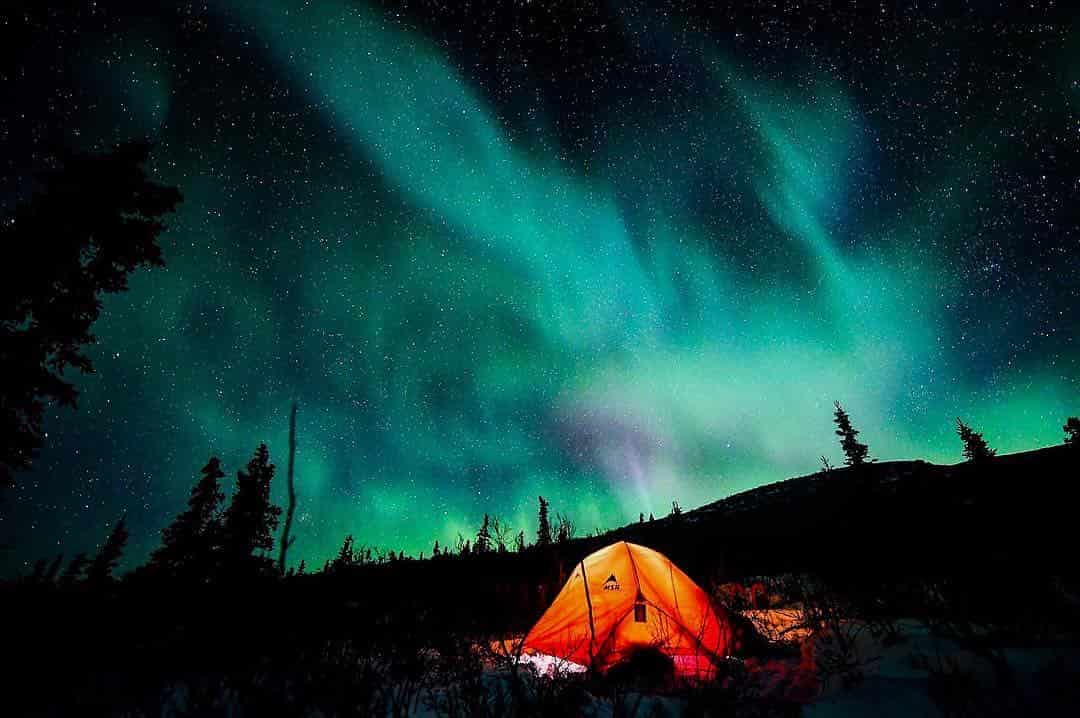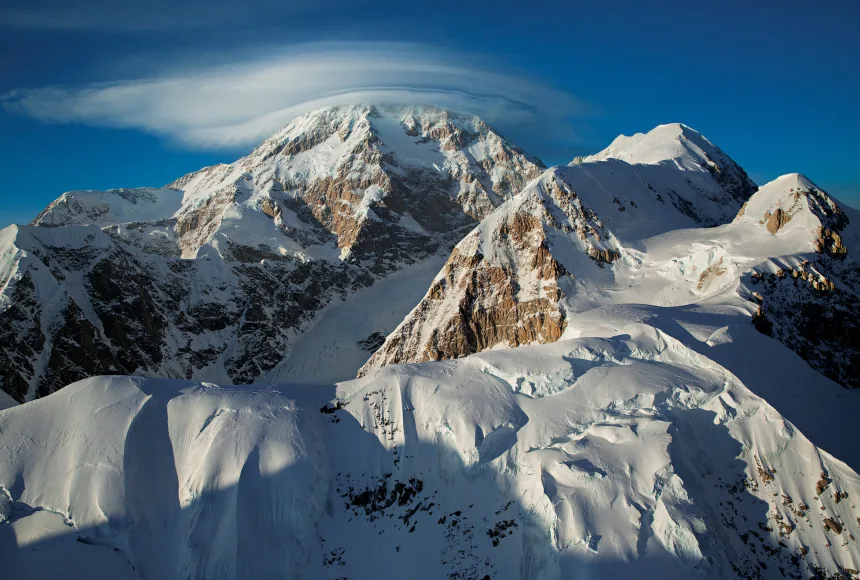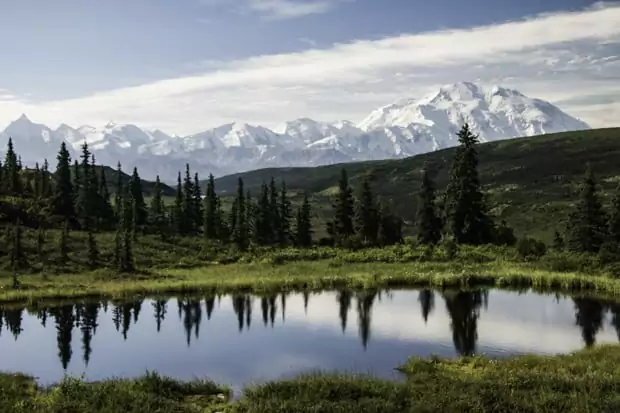
Why Denali?
Wildlife Viewing in Denali National Park
Denali National Park ranks high on traveler bucket lists for its vast spruce and taiga forests; snaking glacial rivers and valleys; alpine vegetation; towering, polychromatic Alaska Range peaks (Mount McKinley, North America’s tallest peak, is located here); and unparalleled wildlife viewing opportunities. From mammoth grizzly bears and moose to Dall sheep, caribou and wolves, this remote wilderness is a treasure trove for animal seekers willing to travel quietly and keep their eyes peeled for even the smallest of movements.
The park is home to 39 species of mammals, from small to large—you’ll just need a good amount of luck and patience to spot them. Make sure to bring a good pair of binoculars with you and have your camera at the ready. Whether you see the animals you’re hoping to or not, Denali’s pristine natural settings offer up jaw-dropping vistas and 169 species of birds that promise to amaze you.
Denali, Alaska
Things to know before you visit Denali National Park

Mount Denali cloud
Denali (Mount McKinley) is the highest mountain in North America, but controversy surrounds both its height and name. With a peak at 6,190 meters (20,310 feet), Alaska's Denali has the highest elevation in North America.
Centerpiece of the Denali National Park and Preserve
Denali is about 210 kilometers (130 miles) north-northwest of Anchorage. Sixty million years ago, tectonic uplift pushed Earth's crust upward, forming Denali and the other Alaska Range mountains. Denali is the centerpiece of the Denali National Park and Preserve, which spans 2.4 million hectares (6 million acres) of land. “Denali” comes from Koyukon, a traditional Native Alaskan language, and means “the tall one.” This name had been used for many generations and was used by early non-Native researchers and naturalists. But in 1896, William A. Dickey, a prospector, began calling Denali “Mount McKinley,” in honor of William McKinley, a presidential candidate at the time.

What to see Denali
Denali is so big that it creates its own weather and is often shrouded in clouds. Less than 30% of travelers visiting Denali National Park ever see the mountain. So if you do see it, consider yourself lucky. However, there are ways to increase your chances. When the mountain is “out,” it can be seen from as far away as Anchorage, but you need to know where to look.
How long to stay in Denali National Park?
It is not possible to visit Denali in one day, unless you are simply flying over it. Many tours visiting the park entrance will spend as few as two nights, but even this only allows for one full day of exploration, usually on a bus. Thus, my recommendation on how long to stay in Denali National Park is to spend at least three nights, preferably in Kantishna, in order to truly explore this massive park. If the trip from Anchorage to Kantishna is too long of a travel day for you, consider adding one day at the park entrance. This way you can enjoy the park entrance while also appreciating the solitude of the park’s interior.

Wildlife Viewing
Generally speaking, your best chances to see wildlife will be while riding a bus ride on the Denali Park Road. A bus offers numerous advantages for the wildlife seeker. some trips are lucky and see a wide variety of wildlife, while others are less lucky and may only see a handful of animals.
By Species
- Moose
- Dall sheep
- Bears
- Caribou
- Wolves
-
Sightings are comparatively frequent between the entrance
and Savage River.
-
heep can often be seen high up on mountains overlooking
Igloo Canyon (approximately Miles 34 - 38).
-
Denali has grizzly and black bears, but it is very rare to
see a black bear.
-
Caribou tend to be in small groups in summer, though on
occasion large herds will gather (100+ animals).
-
Wolves vary quite a bit depending on where packs are
denning.